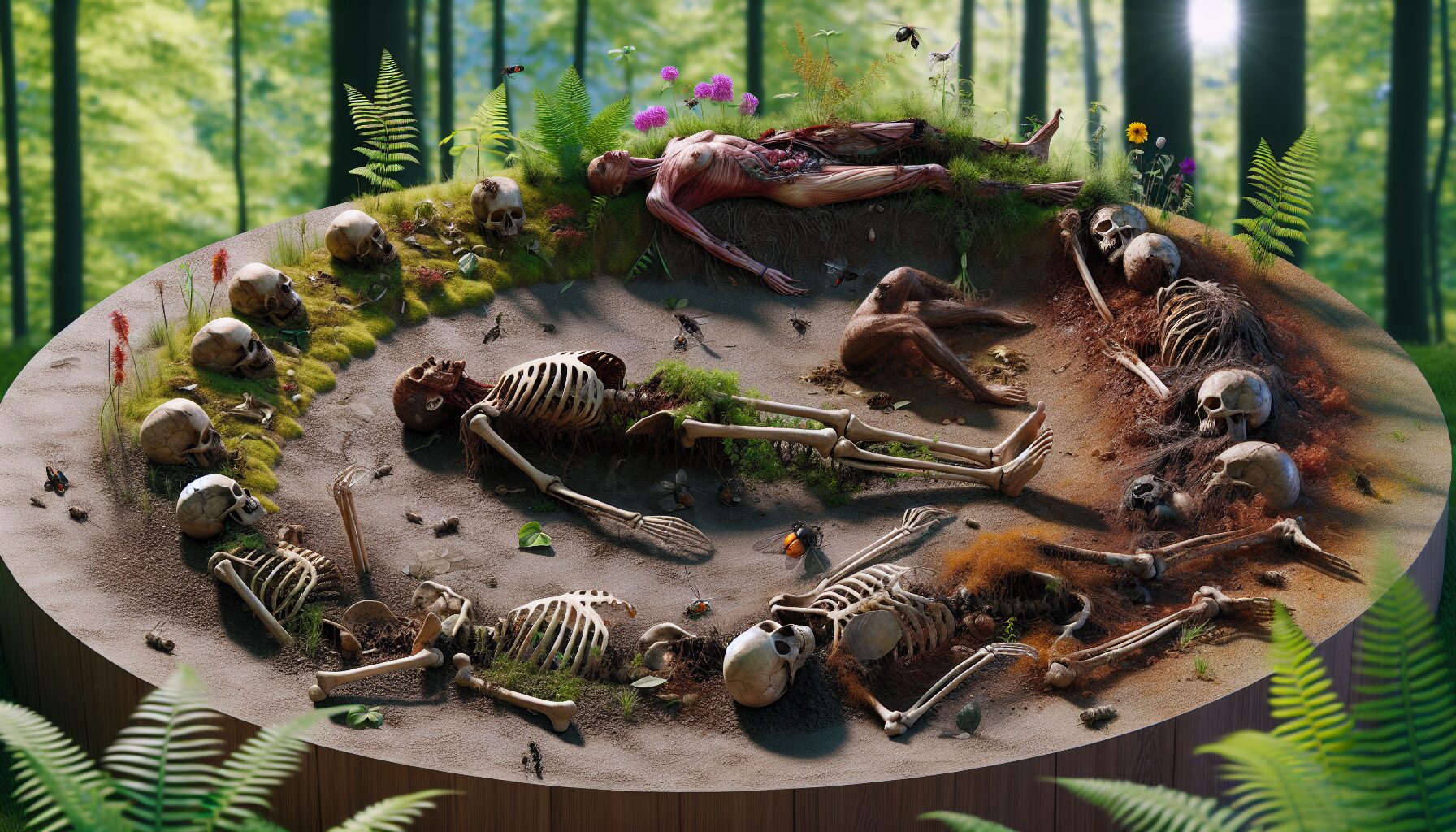The journey of a human body after death is a fascinating yet sobering process governed by nature’s unyielding laws. Understanding the decomposition timeline sheds light on how organisms, including humans, contribute to the cycle of life and death.
Stages of Decomposition
- Fresh Stage (Initial Decay):
- Bloat Stage:
- Active Decay:
- Advanced Decay:
- Dry/Remains Stage:
The decomposition process begins almost immediately after death. During this stage, enzymes within the body start breaking down cells and tissues. Rigor mortis sets in within two to six hours post-mortem, giving the body a stiff appearance. This stage lasts for one to three days.
Roughly after the third day, bacterial activity causes the body to produce gases, leading to bloat. The body may appear swollen, and a noticeable odor emerges due to the bacterial production of sulfur-containing compounds. This stage lasts between four to ten days.
This stage can continue up to 20 days after death. Autolysis and putrefaction processes accelerate, and the body experiences significant tissue breakdown. During this time, remains may start to attract insects, such as blowflies, which aid in further decomposition.
With most soft tissues decomposed, this stage leaves a skeleton with minimal remnants of body tissue. The decomposition rate slows significantly and can last until around 50 days post-mortem. Environmental factors like temperature and humidity play critical roles in this stage.
This is the final stage where all that remains of the body is bones, and in some cases, mummified tissues. Depending on environmental conditions, bones can persist indefinitely, although they will continue to gradually weather over years.
Factors Influencing Decomposition
Many factors influence how quickly or slowly a body decomposes:
- Environmental Conditions: Humidity, temperature, and presence of fauna can hasten or slow down decay. Warmer climates, for example, expedite decomposition.
- Body Condition: Health, body fat composition, and the circumstances of death (trauma, exposure, etc.) also affect decomposition.
- Burial Practices: Being exposed versus being buried or submerged alters the rate significantly. Burial slows decomposition due to reduced access to oxygen and scavengers.
“The body is but the covering of the soul. What lies beneath the surface is the essence of what’s truly everlasting.”
The decomposition process might be unappealing at a glance, but it’s an essential part of nature’s cycle. By understanding this timeline, scientists, anthropologists, and forensic experts gain valuable insights not only in the field of healing and law enforcement but also in our acceptance of life’s transient nature. For more detailed study, check out Scientific American.
